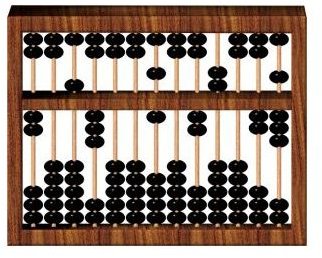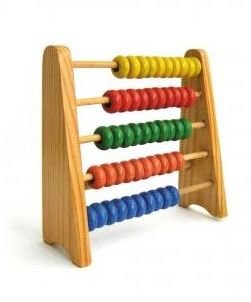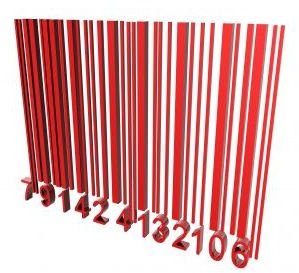A Collection of Informative Articles to Help You Manage Your Inventory
Why Inventory Control is a Must!
Entrepreneurs must think of inventory as the life of their business—if it’s too small in supply it won’t last long and if inventory is so old no one wants it, you won’t make any money there either. Inventory experts have always warned bad inventory management will make or break your business, so Bright Hub is offering this collection of articles to aid you in keeping inventory levels where they should be.
Just having enough inventory isn’t enough either! Business owners need to know how much the inventory costs including manufacturing costs and what methods of inventory control work best for their company.
Then there are the elements of inventory management most of us don’t want to consider. What if you have no cash to buy inventory? Should you finance it? Or, if your inventory is so obsolete, what happens if you hold a blow-out sale to get rid of it?
Finally, we take the mystery out of those funny acronyms—LIFO, FIFO and COGS! This collection of articles ensures you’ll be able to stay on top of your inventory with ease!
Why Bad Inventory Management Will Make You Fail

If you don’t management your inventory correctly, you could lose a lot—especially money. This overview discusses important tips on ordering inventory on vendor stock days when it’s cheaper, how to determine the amount of inventory you need and also why inventory software is so important. Never lose valued cash; follow the advice on inventory provided here.
Analyze Inventory with an ABC Analysis
The elusive ABC analysis is often so complicated some don’t even attempt it. It’s really not that hard to calculate in-stock inventory. The ABC method calculates inventory via percentages of quantity, revenue and percentage amounts to help you determine which inventor is selling the most and those fast-sellers you’ll need to keep on hand along with identifying those low sellers that you may only order two to three times per year—or even upon request. Take the guesswork out of the ABC inventory analysis here.
Types of Inventory Cost Methods
What are FIFO and LIFO when it comes to inventory management? FIFO or first in, first out and LIFO, last in, first out, are control methods used depending on the type of business you own and the amount of inventory you sell. Then there is the average cost method which looks at value and quantity to determine the cost of your total inventory. A must-read to determine which inventory costing method will work best for you.
We learned all about FIFO above, but how do you go about calculating FIFO? Here, we provide an in-depth look at FIFO and why it may or may not be the right choice for your inventory. Because FIFO depends on first in, first out, often in accounting controlled inventory accounts are not utilized meaning other options may come into play such as inventory auditing.
Some feel the last in, first out or LIFO method is outdated. Why? This method often leaves the business owner with antiquated or obsolescent inventory they can’t sell. It also puts the onus on trying to sell the most expensive inventory first, which often may be hard to do as customers wait for discounted prices. Find out if indeed the LIFO method is one you should skip.
What would a round-up on inventory management and control be without a comparison of LIFO versus FIFO? What companies are better off using FIFO and what organizations would benefit from LIFO? It all may depend on what type of business you own, your target market, and customer wants and needs. Find out more in this must-read comparison.
What Is the Moving Average Inventory Cost Method?
Supermarkets almost always utilize the moving average cost method, also known as the weighted average method. For example, if a grocery store manager has many suppliers bringing in various products (some at the same time) a first in, first out or FIFO method can’t really be used. Here, learn why only some types of businesses can use this method and why the Internal Revenue Service (IRS) doesn’t even recognize the system!
Take the Mystery Out of Cost of Goods Sold

How do you determine the cost of the inventory you’re selling? Tax professionals rely heavily on this figure to determine profits or losses. While some say it’s only important at tax time, that’s not really true. Often, business owners also miss important steps in determining cost of goods sold (COGS) such as the shipping and labor costs. Learn the ins and outs of COGS and be a master on this acronym when it comes to inventory management.
Create an Excel Spreadsheet for Cost of Goods Manufactured
Next comes the cost of goods manufactured (COGM) and, here, we’ll walk you through creating your own Microsoft Excel spreadsheet to aid you in determining COGM. It’s important not to miss things like cost of materials and overhead expenses when calculating COGM, and this must-have how-to post ensures at year end, you know exactly where you stand as far as inventory costs.
Should You Ever Finance Inventory?
Is financing inventory a good idea? It may not be for a stationery store selling items they can sell quickly and make a quick profit on; however, on the other hand, a dealership selling expensive new cars may have to finance their inventory because it may run into the millions of dollars. Learn what factors determine if you should finance inventory or if this is an option you should stay away from.
Understanding the Just-In-Time Inventory Method
Isn’t the just-in-time or JIT method the same as the first in, last out method? Not really. The JIT method is often used in quick quality manufacturing where inventory is only brought in exactly when it’s needed to ensure the manufacturing process flows smoothly and effectively. Where did the JIT method come from, who uses it most and why? Find out everything you need to know about the JIT process.
What About Obsolescent Inventory?
What does a business owner do with obsolescent inventory? Do you sell it for pennies on the dollar or try and gain more value by unloading it on auction venues such as eBay? What about selling some old and antiquated inventory to a competitor who has a stronger demand than your market will take? Find out all the answer you need to know about obsolescent inventory, including how to manage it.
Finished Goods Inventory Formula
When year-end rolls around and it’s tax time, your accountant will ask for your balance sheet to show your assets and your trial balance to show the activity of those assets. The same is true for inventory. It is an asset and you need to learn how to calculate what the inventory is really worth at year end by keeping great track of it throughout the year. Learn how to do this here and why it’s key to get it right.
As you can see, inventory and all the steps involved in managing it is not just buying it and selling it for a profit. It is much, much more, including what type of costing method you want to use, determining if financing is right for you, coming up with values at year end and deciding if financing is an option. Never miss out on inventory management again–follow the tips offered in this guide!
References
-
Images from Sxc.hu under the Royalty Free License
